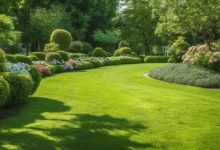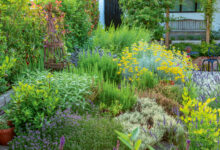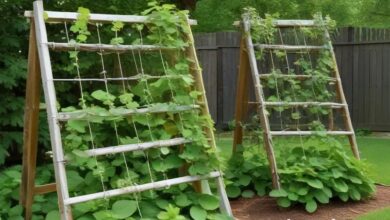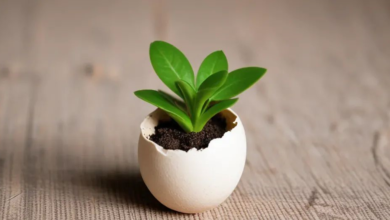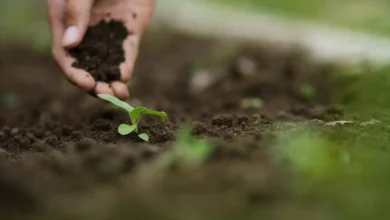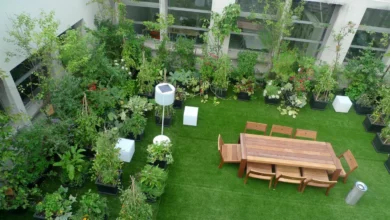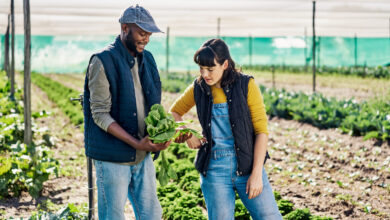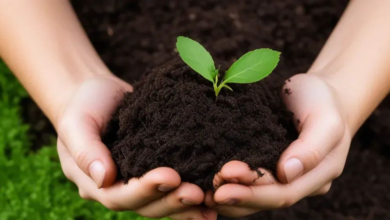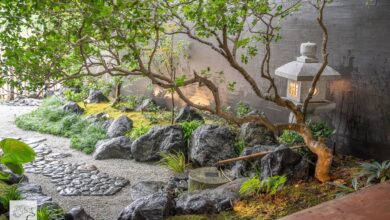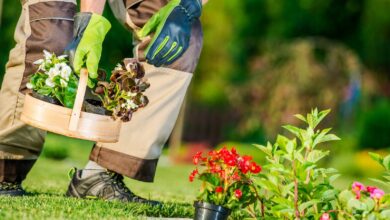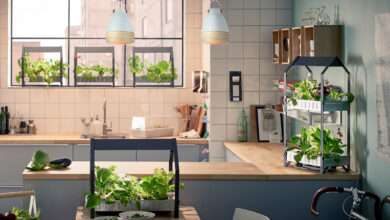Best Self-Watering Planters for Busy Gardeners in 2025
Discover the best self-watering planters for 2025. Expert reviews, buying guides, and top picks for indoor and outdoor gardening with minimal.
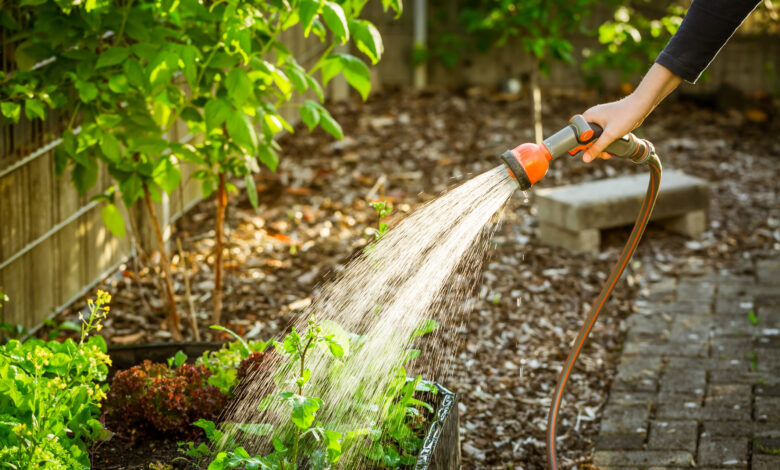
In today’s fast-paced world, maintaining a thriving garden or collection of houseplants can feel like an overwhelming challenge. Between work commitments, travel schedules, and daily responsibilities, many aspiring plant parents find themselves struggling to keep their greenery alive. Enter self-watering planters—the revolutionary gardening solution that’s transforming how busy individuals care for their plants in 2025.
Self-watering planters represent a breakthrough in container gardening technology, offering an automated watering system that delivers consistent moisture directly to plant roots without constant supervision. These innovative plant pots utilize sophisticated reservoir systems and capillary action to ensure your plants receive optimal hydration, whether you’re home or away. As urban gardening continues to surge in popularity, with more people embracing indoor plants for air purification and aesthetic appeal, the demand for low-maintenance gardening solutions has never been higher.
The beauty of self-watering containers lies in their versatility and efficiency. From compact windowsill herb planters to expansive outdoor raised beds, these intelligent gardening systems cater to every space and plant type. They eliminate the guesswork from plant care, prevent both overwatering and underwatering, and promote healthier root development through consistent moisture distribution. Whether you’re cultivating moisture-loving ferns, growing fresh herbs for your kitchen, or maintaining a collection of tropical houseplants, there’s a self-watering planter designed specifically for your needs.
In this comprehensive guide, we’ll explore the best self-watering planters available in 2025, examining their features, benefits, and suitability for various gardening applications. We’ll dive deep into how these innovative containers work, what to consider when purchasing one, and which models offer the best value for different plant types and environments. Whether you’re a complete beginner looking to start your first indoor garden or an experienced gardener seeking to streamline your plant care routine, this guide will help you find the perfect self-watering solution for your green space. Get ready to discover how modern technology can transform your gardening experience, giving you more time to enjoy your thriving plants rather than worrying about their watering schedule.
Self-Watering Planters: How They Work
Self-watering planters operate on a brilliantly simple yet effective principle that mimics natural water distribution in soil. At the heart of every self-watering pot lies a built-in reservoir that stores water separately from the plant’s root zone. This reservoir connects to the growing medium through a wicking system or capillary action mechanism, allowing plants to draw water upward as needed.
The process works through capillary action, where water naturally moves from the reservoir through a wick—typically made from cotton rope, fabric strips, or specially designed soil columns—into the potting mix above. As the soil dries out, it pulls more water from the reservoir, creating a self-regulating system that maintains consistent moisture levels. This bottom-up watering approach is significantly more efficient than traditional top-watering methods because it delivers water directly to the root zone where plants need it most.
Most modern self-watering containers feature a water level indicator that shows when the reservoir needs refilling, eliminating the need to check soil moisture manually. Some advanced models include overflow valves to prevent water accumulation during heavy rainfall when used outdoors. The typical self-watering planter can keep plants hydrated for anywhere from two to four weeks, depending on the reservoir size, plant water requirements, and environmental conditions.
The key advantage of this system is that it prevents the two most common plant-killing mistakes: overwatering and underwatering. By allowing plants to take only the water they need, self-watering pots reduce the risk of root rot while ensuring consistent hydration that promotes vigorous growth and healthy foliage.
Benefits of Using Self-Watering Planters for Busy Gardeners
The advantages of self-watering planters extend far beyond simple convenience, offering a comprehensive solution for modern gardening challenges. For busy professionals, frequent travelers, and anyone with a packed schedule, these innovative containers provide peace of mind knowing their plants won’t suffer from neglect during absences.
- Water efficiency stands out as a primary benefit. Traditional watering methods often result in significant water waste through runoff and evaporation. Self-watering systems minimize this waste by delivering water directly to roots and reducing surface evaporation. This efficiency not only conserves water but also reduces your environmental footprint—an increasingly important consideration in 2025’s sustainability-focused gardening landscape.
- Consistent moisture levels promote healthier plants with stronger root systems. Plants grown in self-watering containers typically exhibit more vigorous growth, lusher foliage, and higher yields because they never experience the stress of drought or waterlogging. This consistency is particularly beneficial for moisture-loving plants like ferns, calatheas, begonias, and most tropical houseplants that struggle with fluctuating water availability.
Time savings represent another significant advantage. Instead of checking each plant daily to assess watering needs, gardeners can simply refill reservoirs every few weeks. This streamlined approach allows you to maintain an extensive plant collection without dedicating hours to daily care routines. For urban gardeners managing balcony gardens or apartment plant collections, this efficiency is invaluable.
Self-watering planters also promote deeper root development. When plants draw water from below, roots naturally grow downward seeking moisture, creating stronger, more robust root systems compared to shallow-rooted plants that rely on surface watering. This deep root development enhances plant stability and overall health.
Top Self-Watering Planters for Indoor Plants in 2025
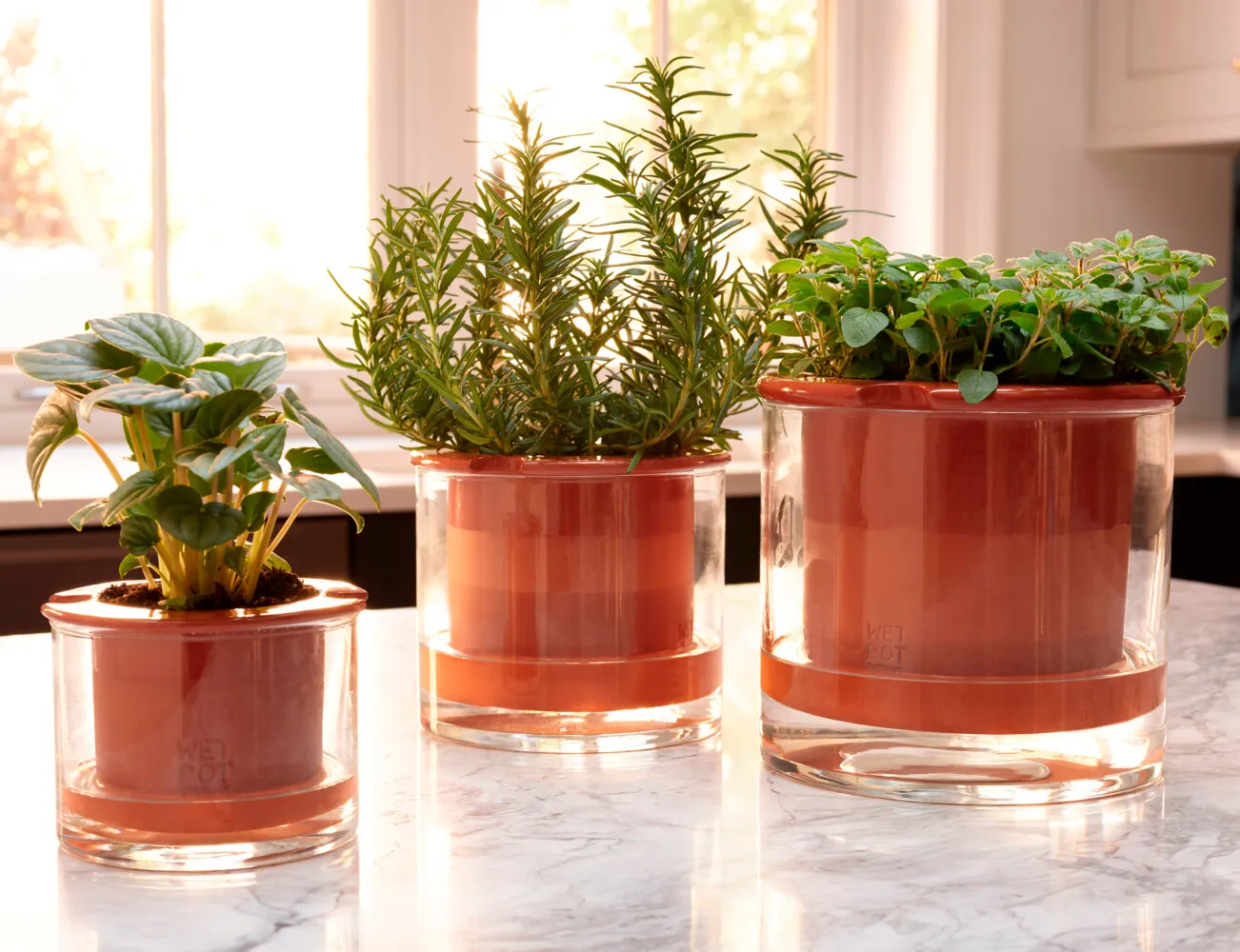
When it comes to indoor gardening, selecting the right self-watering planter can transform your houseplant care routine. The best indoor self-watering pots combine functionality with aesthetic appeal, ensuring they complement your home decor while keeping plants thriving.
Premium Glass Self-Watering Planters
Transparent self-watering planters have gained immense popularity in 2025 for their modern aesthetic and practical visibility. The LSA International Self-Watering Planter features mouth-blown glass construction with a visible cotton rope wick system, allowing you to monitor root development and water levels at a glance. Available in multiple sizes ranging from 13cm to 22cm, these planters work beautifully for small to medium houseplants and add a sophisticated touch to any room.
Compact Self-Watering Pots for Small Spaces
For apartment dwellers and those with limited floor space, compact self-watering containers offer big functionality in small footprints. The HBServices USA Self-Watering Plant Pot stands out as the best overall choice for single plants, featuring an elevated design with large drainage slats that promote excellent aeration while preventing mold formation. This 10-inch planter can sustain plants for up to two weeks between refills and includes a removable inner pot for easy reservoir access.
Decorative Ceramic Self-Watering Planters
The Sunnychicc African Violet Self-Watering Ceramic Planters combine traditional aesthetics with modern technology. These ceramic pots feature a classic design with built-in water reservoirs and wicking systems, making them ideal for moisture-loving plants like African violets, orchids, and peace lilies. The porous ceramic material also provides additional moisture regulation and breathability that plastic alternatives cannot offer.
Smart Self-Watering Systems
For tech-savvy plant parents, app-connected self-watering planters represent the cutting edge of indoor gardening. These high-tech systems include sensors that monitor soil moisture, light levels, and even nutrient content, sending notifications to your smartphone when attention is needed. While these premium options come at higher price points, they offer unparalleled convenience for maintaining optimal growing conditions.
Best Outdoor Self-Watering Planters and Raised Beds
Outdoor self-watering planters face different challenges than their indoor counterparts, requiring durability, weather resistance, and often larger capacities. The best outdoor options excel in these demanding conditions while providing reliable moisture delivery throughout the growing season.
Large Capacity Self-Watering Raised Beds
The Keter Urban Bloomer Raised Garden Bed represents an excellent choice for vegetable gardening and herbs. This elevated self-watering planter features a 6.7-gallon reservoir that can sustain plants for extended periods, even during hot summer months. Constructed from recycled plastic with UV protection, it withstands outdoor elements while providing ergonomic height for comfortable gardening without back strain. The modular design allows for customization with add-on trellises and protective covers.
Window Box Self-Watering Planters
The Lechuza Balconera Self-Watering Garden Planter has become the gold standard for window boxes and balcony gardening in 2025. Available in multiple sizes from 50cm to 80cm, these planters feature integrated water reservoirs with precise level indicators and overflow drainage systems. The UV-resistant polypropylene construction ensures longevity, while the included removable plant liners make seasonal replanting effortless. Perfect for growing trailing flowers, herbs, or compact vegetables in limited outdoor spaces.
Weather-Resistant Polyrattan Planters
For gardeners seeking durability combined with upscale aesthetics, polyrattan self-watering containers offer the look of natural wicker with superior weather resistance. These robust planters feature reinforced construction that withstands temperature extremes, UV exposure, and moisture without degrading. The sophisticated woven texture adds visual interest to patios, decks, and entryways while concealing efficient self-watering mechanisms within.
Rolling Self-Watering Planters
Mobility adds another dimension to outdoor gardening flexibility. Rolling self-watering planters equipped with heavy-duty casters allow you to reposition plants easily to follow sunlight, protect sensitive plants from harsh weather, or rearrange your outdoor space for entertaining. These mobile containers typically feature larger reservoirs to support bigger plants and extended watering intervals.
Self-Watering Planters for Herbs and Vegetables
Growing edibles in self-watering containers offers significant advantages for urban food production. Herbs and vegetables demand consistent moisture for optimal flavor development and productivity, making them ideal candidates for self-watering systems.
Windowsill Herb Planters
The OurWarm Windowsill Herb Planter Set revolutionizes kitchen gardening with its compact three-pot system designed specifically for countertop or windowsill placement. Each pot features an independent self-watering reservoir that maintains ideal moisture for herbs like basil, cilantro, parsley, and mint. The space-efficient design maximizes vertical growing space while keeping fresh ingredients within arm’s reach of your cooking area.
Rectangular Self-Watering Planters for Multiple Plants
The Amazing Creation Windowsill Herb Planter Box accommodates multiple herbs in a single elongated container, perfect for creating themed herb collections like Italian (basil, oregano, thyme) or Mexican (cilantro, jalapeños, epazote) cuisine gardens. The shared reservoir system simplifies maintenance, while the drainage system prevents waterlogging even with different plant species.
Deep Self-Watering Containers for Vegetables
Root vegetables and larger plants like tomatoes require deeper containers with substantial reservoirs. The GardenBasix Elongated Self-Watering Planter offers generous depth and a high-capacity reservoir ideal for growing vegetables that need consistent moisture throughout their growing season. These containers work exceptionally well for tomatoes, peppers, eggplants, and even compact bush varieties of cucumbers and squash.
Budget-Friendly Self-Watering Planter Options
Quality self-watering planters don’t require breaking the bank. Several affordable options deliver reliable performance for budget-conscious gardeners without sacrificing functionality.
Bloem Ariana Self-Watering Planter
The Bloem Ariana 6-inch Self-Watering Planter represents exceptional value, often priced under $10 while offering the essential features of more expensive models. Available in multiple colors and sizes ranging from 6 to 20 inches in diameter, these planters feature simple yet effective bottom-watering systems perfect for beginners. The smallest 8-inch version costs as little as $3, making it the most budget-friendly option for starting a self-watering plant collection.
DIY Self-Watering Globes
For the ultimate budget solution, plant watering globes offer an entry-level introduction to self-watering technology. These transparent PVC globes simply fill with water and insert into existing pots, gradually releasing moisture over several days to weeks. While requiring more frequent refilling than integrated reservoir systems, they cost significantly less and work with any standard pot you already own.
Basic Self-Watering Conversion Kits
Self-watering spikes and conversion systems allow gardeners to transform standard containers into self-watering planters without purchasing entirely new pots. The GreenShip Self-Watering Spikes Kit includes four adjustable spikes sized for different pot heights, enabling you to reuse containers while implementing efficient bottom-watering technology. This eco-friendly approach minimizes waste while maximizing your existing gardening supplies.
Specialty Self-Watering Planters: Hanging, Vertical, and Unique Designs
Innovative self-watering planter designs continue expanding gardening possibilities in 2025, offering solutions for previously challenging growing situations.
Hanging Self-Watering Planters
The Melphoe Self-Watering Hanging Planters two-pack addresses the notorious difficulty of maintaining hanging plants. These suspended containers feature cotton wick ropes that draw water from built-in reservoirs, complete with metal chains for outdoor use and decorative hooks for indoor hanging. Available in clear, emerald, and gray finishes, they eliminate the mess and hassle of watering overhead plants while maintaining consistent moisture for trailing varieties like pothos, string of pearls, and trailing begonias.
Vertical Self-Watering Gardens
The GreenStalk Vertical Planter revolutionizes small-space gardening with its stackable tier system. Available in five-tier and seven-tier configurations, these vertical self-watering planters maximize growing capacity in minimal floor space. Each tier features individual pockets with central watering tubes that distribute water throughout the entire system. Perfect for patios, balconies, or indoor spaces, these vertical gardens work beautifully for strawberries, herbs, lettuce, and compact flowers.
Modular Self-Watering Systems
The Symple Stuff Self-Watering Plant Pot offers unprecedented customization with its modular design. Gardeners can adjust height, color combinations, and pot angles to create personalized displays. The sophisticated irrigation system promises 30-day watering intervals, making it ideal for frequent travelers or vacation homes where extended plant care isn’t feasible.
Self-Watering Orchid Planters
Orchids present unique watering challenges that specialized planters address perfectly. The Eva Solo Self-Watering Orchid Pot features a design specifically engineered for epiphytic orchids, with excellent drainage, air circulation, and precise moisture control. The transparent construction allows monitoring root health—critical for orchid care—while the reservoir prevents the feast-or-famine watering cycle that stresses these temperamental plants.
Choosing the Right Self-Watering Planter: Buying Guide
Selecting the ideal self-watering planter requires evaluating several key factors to ensure it meets your specific gardening needs and plant requirements.
Size and Capacity Considerations
Match planter size to both your plant’s current dimensions and anticipated growth. Small 4-6 inch self-watering pots work well for herbs, succulents, and young houseplants, while mature specimens require 10-12 inch containers or larger. Consider reservoir capacity too—bigger reservoirs support longer intervals between refills, but add weight and bulk. For outdoor containers, larger reservoirs become essential during hot summer months when evapotranspiration rates increase dramatically.
Material Selection
Self-watering planters come in various materials, each with distinct advantages. Plastic options offer lightweight portability, affordability, and weather resistance, making them practical for most applications. Ceramic planters provide superior aesthetics and additional moisture regulation through porous walls, but cost more and weigh significantly more when filled. Glass containers deliver modern style with root visibility but require careful placement to avoid breakage. Recycled materials increasingly dominate the market, combining eco-consciousness with durability.
Wicking System Types
Different wicking mechanisms suit different plants. Rope or fabric wick systems work universally well and allow easy observation of the capillary action. Soil column wicks—where soil itself transports water upward—provide more gradual moisture distribution ideal for mature plants with established root systems. Some premium planters feature adjustable wicking rates, allowing customization based on plant water requirements.
Water Level Indicators
Reliable water indicators eliminate guesswork about refilling timing. Look for clear, easy-to-read indicators that accurately reflect reservoir levels. Some indicators use floating mechanisms, while others employ transparent windows. The best systems combine visibility with accuracy, preventing both reservoir depletion and overflow.
Drainage and Overflow Features
Outdoor self-watering planters absolutely require overflow valves or drainage holes to prevent water accumulation during rainfall. Indoor containers benefit from drainage systems that protect against overfilling. Check that drainage components are easy to access for cleaning, as blockages can compromise the entire watering system’s effectiveness.
Best Plants for Self-Watering Planters
While self-watering containers accommodate most plant species, certain varieties particularly thrive in these controlled moisture environments.
Moisture-Loving Houseplants
Plants that naturally prefer consistently moist soil excel in self-watering planters. Ferns of all varieties—from delicate maidenhair to robust Boston ferns—love the steady hydration these systems provide. Calatheas, prayer plants, and other members of the Marantaceae family thrive with consistent moisture that prevents leaf edge browning. Peace lilies (Spathiphyllum) reward proper watering with frequent blooming, and self-watering pots eliminate the dramatic wilting episodes these plants exhibit when thirsty.
Herbs That Benefit from Consistent Moisture
Basil absolutely flourishes in self-watering herb planters, maintaining lush growth without the stress that causes premature flowering. Parsley, cilantro, and mint all appreciate consistent water availability. Chives, dill, and oregano adapt well to self-watering systems, though slightly drier conditions work too. The key advantage is eliminating the feast-or-famine cycle that causes herbs to bolt or develop bitter flavors.
Vegetables for Self-Watering Containers
Tomatoes grown in self-watering raised beds produce more consistent yields with fewer problems like blossom end rot, which results from irregular watering. Peppers, both sweet and hot varieties, maintain steady growth and fruit development. Lettuce and other salad greens benefit enormously from consistent moisture, producing tender, flavorful leaves without the bitterness that drought stress causes. Cucumbers, though requiring larger containers, thrive when their substantial water needs are reliably met.
Plants to Avoid in Self-Watering Planters
Desert-adapted plants like cacti and most succulents generally prefer drier conditions and perform better in traditional pots with excellent drainage. Lavender, rosemary, and other Mediterranean herbs accustomed to periodic drying between waterings may develop root problems in constantly moist self-watering systems. For these plants, traditional containers with careful watering practices work better than automated systems.
Maintenance and Care Tips for Self-Watering Planters
Proper maintenance ensures self-watering planters continue functioning effectively for years while keeping plants healthy.
Reservoir Cleaning and Prevention of Algae Growth
Empty and clean reservoirs every three to four months to prevent algae buildup, bacterial growth, and mineral deposit accumulation. Transparent reservoirs require more frequent cleaning as algae thrives in light-exposed water. Use a mixture of water and white vinegar (10:1 ratio) to dissolve mineral deposits and disinfect reservoirs. Rinse thoroughly before refilling to avoid vinegar damage to plants.
Soil Selection for Optimal Wicking
Choose high-quality potting mixes specifically formulated for containers rather than garden soil or topsoil. The ideal mix for self-watering containers combines good water retention with excellent drainage—seemingly contradictory but achievable through proper component balance. Mix standard potting soil with perlite (20-30% by volume) to improve aeration and prevent compaction. Avoid vermiculite in excess, as it retains too much moisture in self-watering systems. Some gardeners add coarse sand or bark fines for additional drainage, particularly for plants that prefer slightly drier conditions.
Monitoring Water Levels and Refilling Schedule
Check water indicators weekly initially to understand your plants’ consumption patterns. Consumption rates vary dramatically based on plant size, species, growth rate, temperature, humidity, and light levels. During active growing seasons (spring and summer), refill more frequently. Reduce watering frequency during dormancy periods (fall and winter) when plants require less moisture. Never let reservoely empty, as this can disrupt the capillary action and stress plants. Maintain reservoirs at approximately one-third to two-thirds full for optimal performance.
Fertilization in Self-Watering Systems
Dilute liquid fertilizer to quarter-strength and add directly to reservoirs during refilling. Standard fertilizer concentrations can accumulate to harmful levels in self-watering planters because water constantly cycles through the root zone. Fertilize every four to six weeks during growing seasons and discontinue during dormancy. Flush soil monthly by top-watering until water drains freely to prevent fertilizer salt buildup, which manifests as white crusty deposits on soil surfaces or planter rims.
Seasonal Adjustments
Adjust watering frequency seasonally. Plants consume significantly less water during shorter, cooler days of fall and winter. Conversely, summer heat and long daylight hours increase water requirements dramatically. Move outdoor self-watering containers to protected locations during temperature extremes or heavy storms. For indoor plants near heating vents or air conditioners, monitor water consumption more carefully as these environmental factors accelerate evaporation.
Common Problems and Troubleshooting Self-Watering Planters
potential issues help maintain healthy plants in self-watering systems.
Wicking System Failures
If soil remains dry despite full reservoirs, wick systems may have failed. Check that wicks maintain continuous contact between the reservoir and soil—air gaps interrupt capillary action. Replace fabric or rope wicks annually as they can clog with minerals or debris. For soil column wicks, gently probe with a dowel to break up compaction that blocks water movement. When replanting, ensure new soil makes firm contact with wicking mechanisms.
Overwatering Symptoms Despite Self-Regulation
Yellowing leaves, mushy stems, or foul odors indicate overwatering even in self-watering planters. This typically results from inadequate drainage, poor soil aeration, or inappropriate plants for self-watering systems. Improve conditions by mixing more perlite into the soil, ensuring overflow drainage functions properly, and allowing reservoirs to empty between refills occasionally to let the soil dry slightly. Consider transferring plants preferring drier conditions to traditional pots.
Root Rot Prevention
Inspect root health annually when repotting. Healthy roots appear white or tan and firm, while rotted roots turn brown, black, or grey and feel mushy. Prevent root rot by maintaining good soil aeration, avoiding soil compaction, cleaning reservoirs regularly, and ensuring plants are suited for consistent moisture. If root rot develops, trim affected roots, repot in fresh soil with improved drainage, and reduce reservoir refilling frequency.
Mineral Buildup and Salt Accumulation
White crusty deposits indicate mineral accumulation from hard water or fertilizer salts. Flush soil monthly by thoroughly watering from the top until water flows freely from drainage holes. This leaches accumulated salts away from the root zone. Consider using filtered or distilled water if mineral buildup persists, or alternate between reservoir filling and top watering to periodically flush the system.
DIY Self-Watering Planter Projects
Creating custom self-watering planters offers budget-friendly options while allowing complete customization.
Basic Two-Container System
Construct simple self-watering planters using two containers—one slightly larger than the other. Drill holes in the smaller container’s bottom, insert it into the larger container, and add cotton rope wicks threaded through the holes. Fill the bottom container with water, add soil to the top container, and plant. This fundamental design costs under $10 and works effectively for most plants.
Recycled Bottle Self-Watering System
Cut plastic bottles in half, invert the top portion into the bottom, thread fabric strips as wicks, and create instant self-watering containers. This ultra-budget approach reuses materials while providing functional growing containers perfect for herbs, small houseplants, or starting seedlings. Decorate exteriors with paint or fabric to match home decor.
Large-Scale DIY Self-Watering Raised Beds
Construct wooden raised beds with plastic reservoir liners and perforated pipes, creating efficient self-watering systems for extensive vegetable gardens. Though requiring more construction expertise and materials, DIY raised beds cost significantly less than commercial equivalents while offering complete size customization. Install water level indicators using clear tubing for easy monitoring.
Environmental Impact and Sustainability of Self-Watering Planters
Self-watering planters contribute significantly to sustainable gardening practices through water conservation and resource efficiency.
Water Conservation Benefits
Traditional overhead watering wastes 30-50% of applied water through runoff and evaporation. Self-watering systems reduce waste to under 10% by delivering water directly to roots with minimal surface exposure. This efficiency becomes increasingly important as water scarcity affects more regions globally. For perspective, a typical garden using traditional watering methods consumes 30-40% more water annually than equivalent gardens using self-watering containers.
Recycled Materials and Eco-Friendly Options
Leading manufacturers increasingly utilize recycled plastics and sustainable materials. Companies like GreenShip produce planters from recycled resin mixed with natural stone powder, creating durable products with minimal environmental impact. Recycled rubber planters offer weatherproof performance from otherwise discarded materials. Choose eco-friendly options when possible to support sustainable manufacturing practices and reduce plastic waste.
Reduced Fertilizer Runoff
Controlled watering in self-watering planters minimizes fertilizer runoff into groundwater and storm drains. Traditional gardening often flushes excess fertilizer away, contributing to water pollution and algae blooms. Closed reservoir systems retain nutrients in the root zone, improving plant uptake while protecting environmental water quality.
Also Read: The Ultimate Guide to Watering Your Plants Correctly
Conclusion
Self-watering planters have evolved from convenience products into essential tools for sustainable, efficient gardening in 2025. These innovative containers address the fundamental challenges facing modern gardeners—limited time, inconsistent watering habits, and resource conservation—while promoting healthier, more vigorous plant growth through precise moisture management. From compact windowsill herb gardens to expansive outdoor raised beds, self-watering systems accommodate every growing situation and experience level.
Whether you select premium glass planters for your living room, budget-friendly options for starting your plant collection, or specialized designs for hanging plants and vertical gardens, the right self-watering planter transforms plant care from a daily chore to an occasional maintenance task. By investing in quality self-watering containers and following proper care guidelines, busy gardeners can finally cultivate thriving indoor and outdoor gardens without sacrificing their packed schedules. The combination of water efficiency, consistent plant performance, and minimal maintenance requirements makes self-watering planters the smart choice for anyone seeking greener living spaces in our increasingly hectic modern world.
